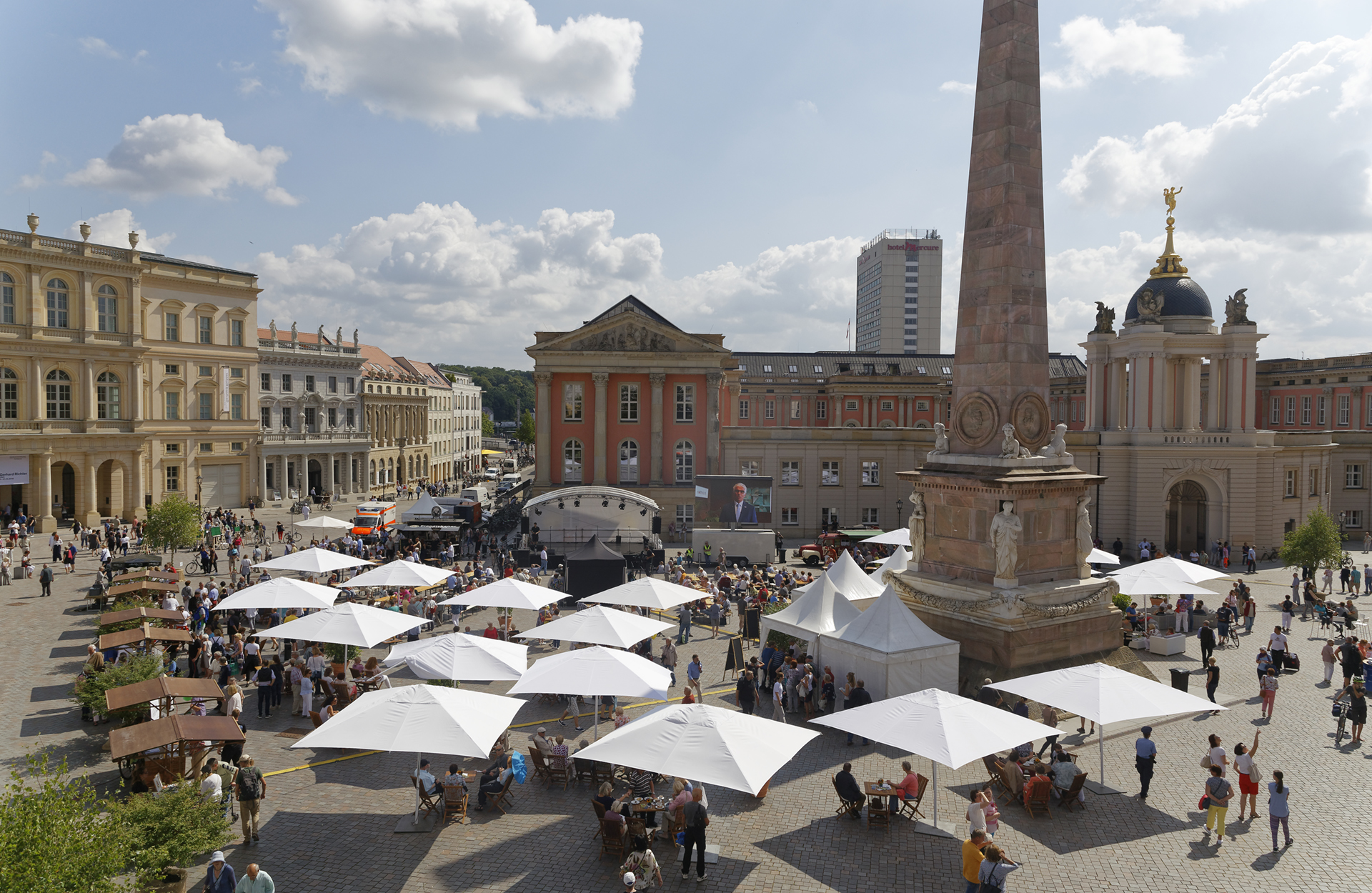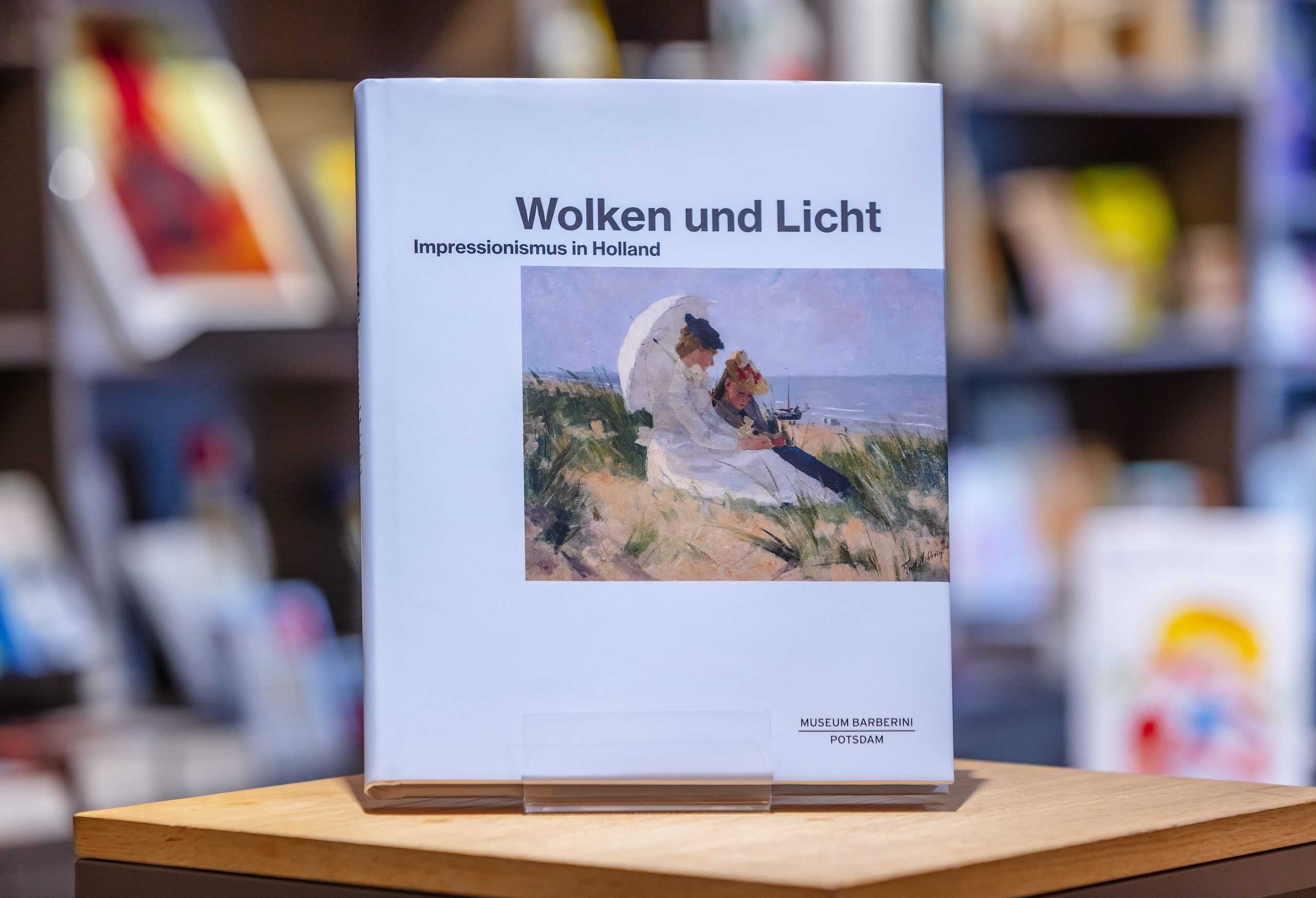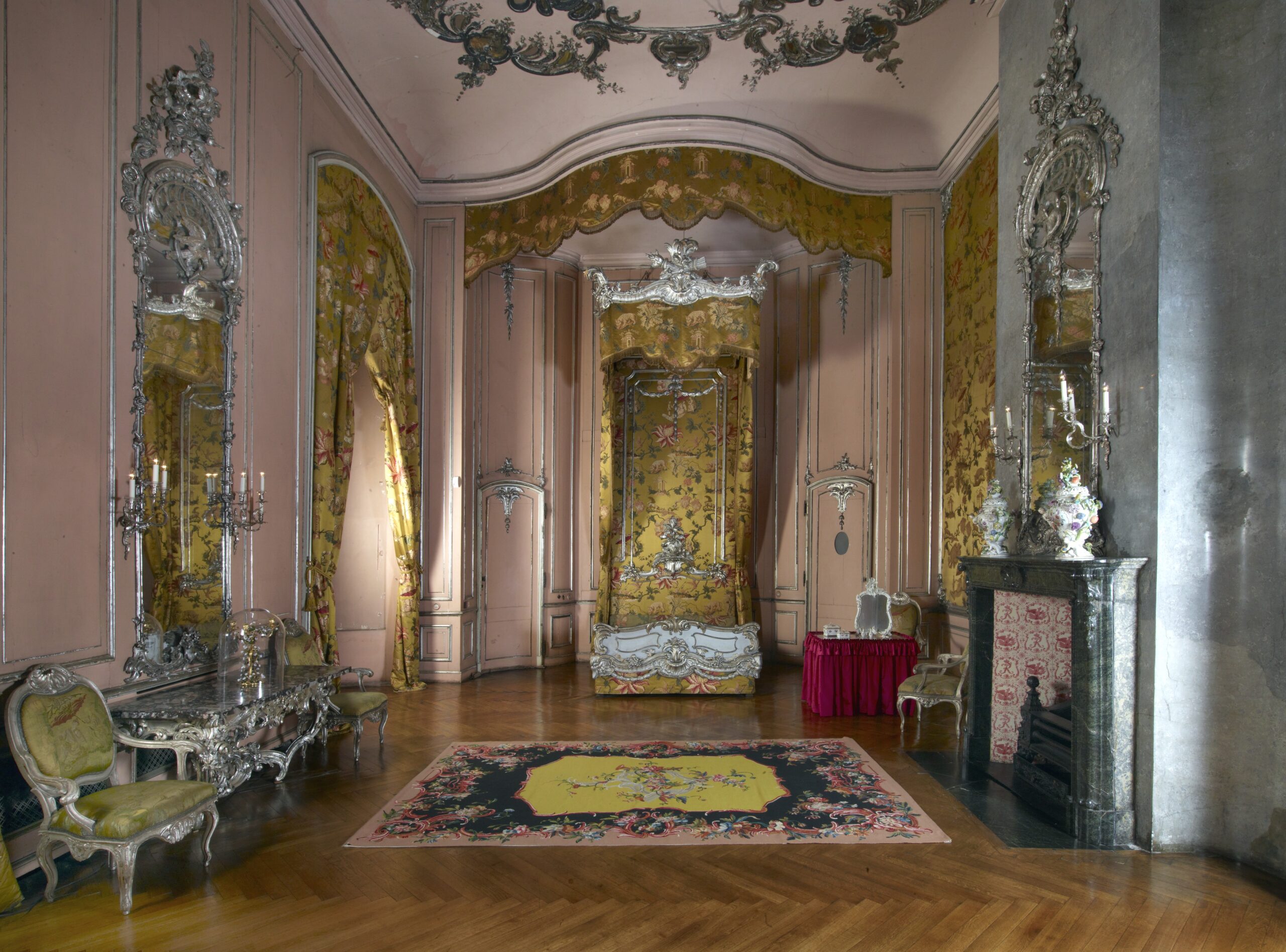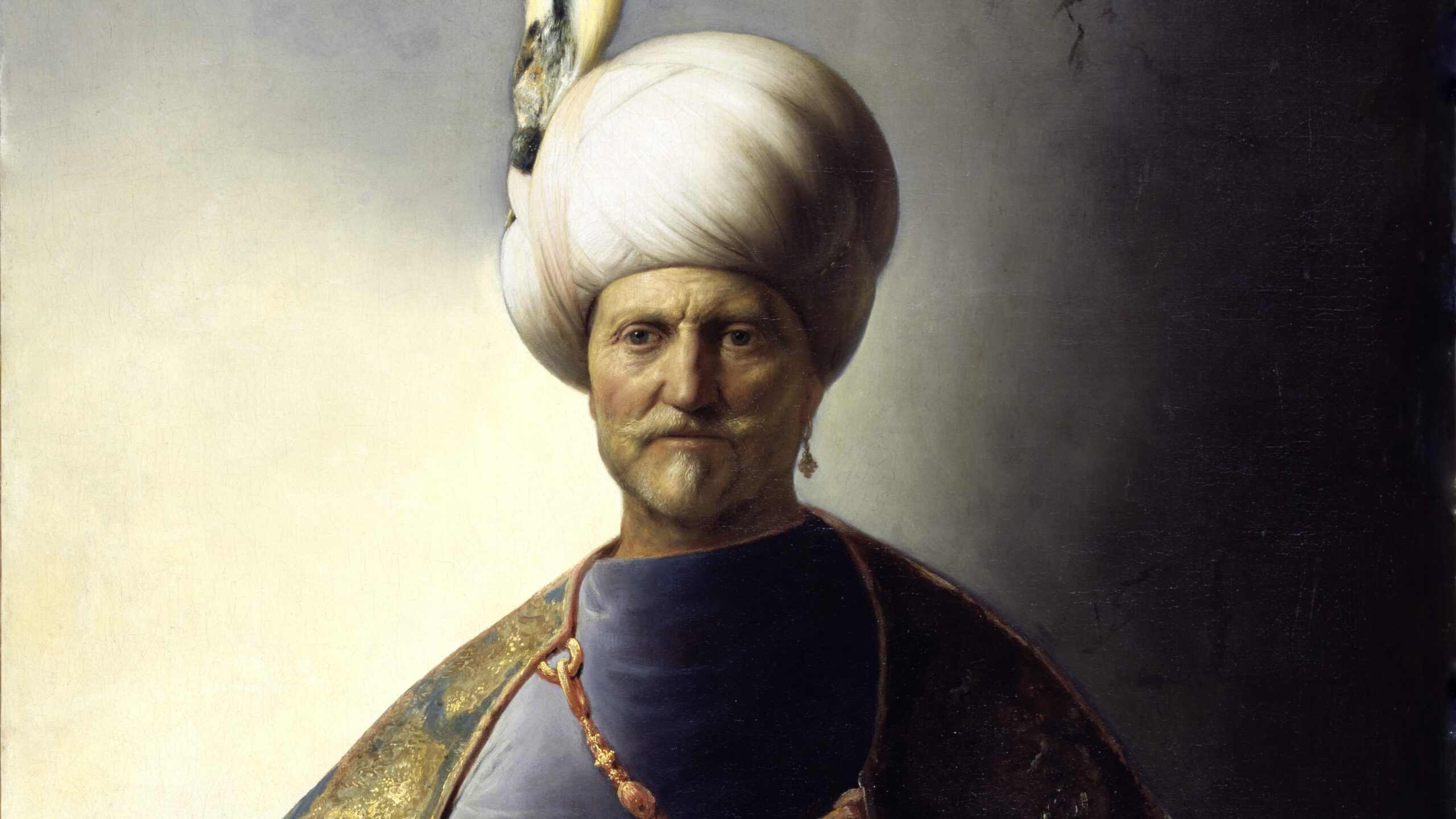
Jan Lievens’ “Man Dressed in “Oriental” Clothing”
The painting Man Dressed in “Oriental” Clothing by Jan Lievens (1607‒1674) belongs to the masterworks of 17th-century Dutch painting. Depicted is an elderly man wearing an earring and turban, whose wafer-thin heron feathers and its thin plied fabric is reproduced with such attention to detail that they almost seem so real that we could touch them. The man portrayed is dressed in a velvet garment belted by a cloth slung over the hips. Around his shoulders lies a heavy coat embroidered with gold brocade, clasped together over his body by a solid gold chain. The man confidently grips his belt, extending his elbows as he does so ‒ the gesture of a ruler showing off his extensive body to its best advantage. Effective use of light and shadow dramatically sets the scene for the figure, whose gaze seems lost in the distance.
The turban, earring and clothing indicate a ruler from the Ottoman or Persian Empire. The painting corresponds to a type of representation that art history refers to as a tronie (Dutch: face). Its origins lie in the painting workshops of the late 16th century, where such expressive studies were used as sources for history paintings. In the early works by Jan Lievens and Rembrandt, in which both painters artistically influenced one another, this image genre evolved from mere studies into independent works of art. These works depict individual figures resembling portraits and history paintings, yet they are neither. They offer exceptional possibilities for representing frames of mind, rendering diverse materials, and experimenting with light and shadow, as well as colouration.
In their numerous tronies, Lievens and Rembrandt liked to show recurring types, who could be recognized as a soldier through pieces of armour or, alternatively, as a prince through precious jewellery and the appropriate clothing. By adding a turban, a prince could quickly be transformed into a ruler from the “Orient”. A subject’s ambiguity occasionally led to titles being made up. Thus, our Man Dressed in Oriental Clothing, for instance, also became known as a Portrait of Sultan Suleiman as of 1707. Around 1631, Constantijn Huygens, secretary for the Dutch stadtholder Frederick Henry, Prince of Orange, described the painting as “a type of Turkish prince” “the head of a Dutchman”. In Rembrandt’s circle, we quite frequently encounter facial features similar to those of this man. A real person would have modelled for the artists in Leiden.
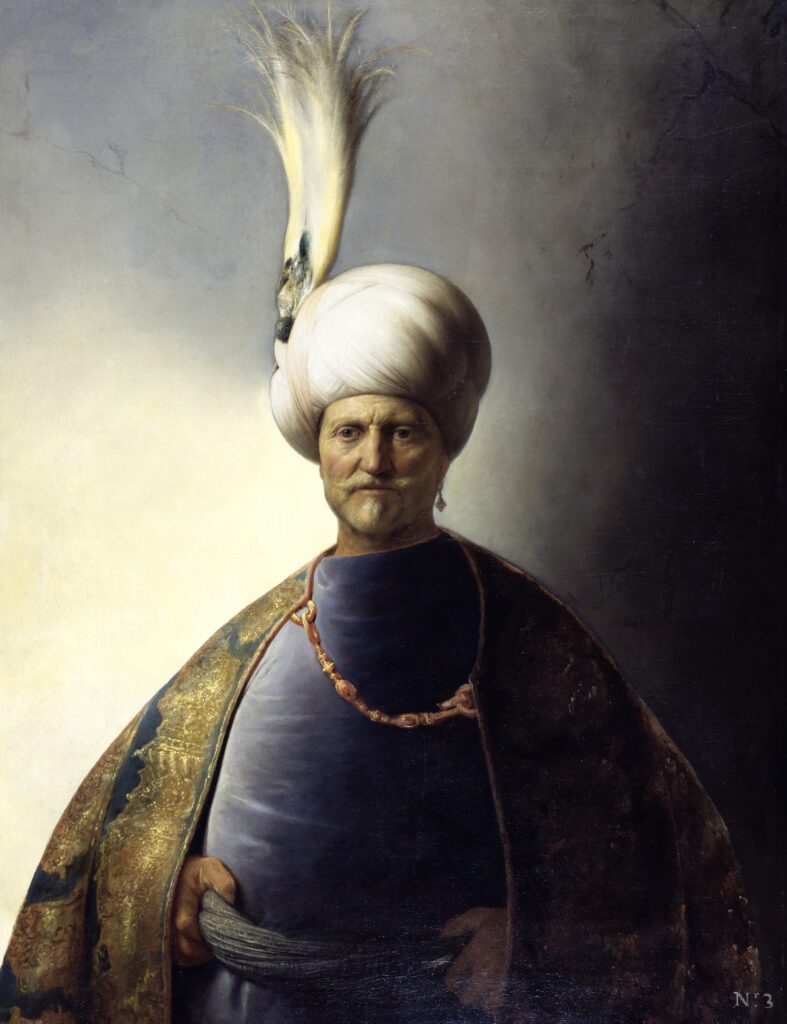
After 1602, the Dutch Republic came into contact with Asia by founding the “United East India Company”. However, “Asia” and “Orient” were rather generic terms, which included the regions of Pakistan, Persia and modern-day Iraq. The company concluded a trade agreement with Persia in 1623, and three years later, a Persian delegation travelled to towns in the Dutch Republic. They raised the local population’s interest in topics about the “Orient”, which also found expression in painting.
Figures with a Middle Eastern look had already appeared as biblical and historical characters in paintings. However, it was the two young painters from Leiden who, as of 1627, began making depictions of “orientalism” worthy of representation, also through solo figures. Just a year after the arrival of the Persian delegation, Rembrandt took up this subject matter, and two years later, Lievens painted our “man from the Orient”. Nevertheless, Dutch interest in the “Orient” did not go beyond superficial fascination. For example, our tronie in costume only hints at the attire that would have been worn in the Ottoman Empire. The coat seems like a mix of an expensive carpet and a liturgical garment.
Around 1624‒31, Rembrandt and Lievens were among the up-and-coming painters in Leiden, who soon drew the attention of court circles in The Hague. Our painting, presumably Lievens’ first commission from the stadtholder, was made between 1629 and 1631. When the male line of the Orange-Nassau stadtholder family died out in 1702, a dispute arose over the inheritance between Prussia and the Frisian Nassau-Dietz branch. The Prussian king was awarded several Dutch palaces due to a unification contract concluded in 1732. Beginning in 1742, King Frederick II had around 50 outstanding paintings transported from them to Berlin, including Lievens’ painting. Interpreted as a work by Rembrandt, it was sent to the Picture Gallery at the Berlin Palace. It was not until the late 19th century that the painting entered the Picture Gallery at Sanssouci. It replaced works by Rembrandt from Frederick’s original display, which were transferred to the Königliches Museum (Royal Museum, now the Altes Museum) in Berlin in 1830.
– Dr. Alexandra Nina Bauer, Stiftung Preußische Schlösser und Gärten Berlin-Brandenburg
Header Image: (Detail) Jan Lievens: Man Dressed in “Oriental” Clothing, c.1629 – 1631, Picture Gallery of Sanssouci │ Photo: SPSG, Roland Handrick

